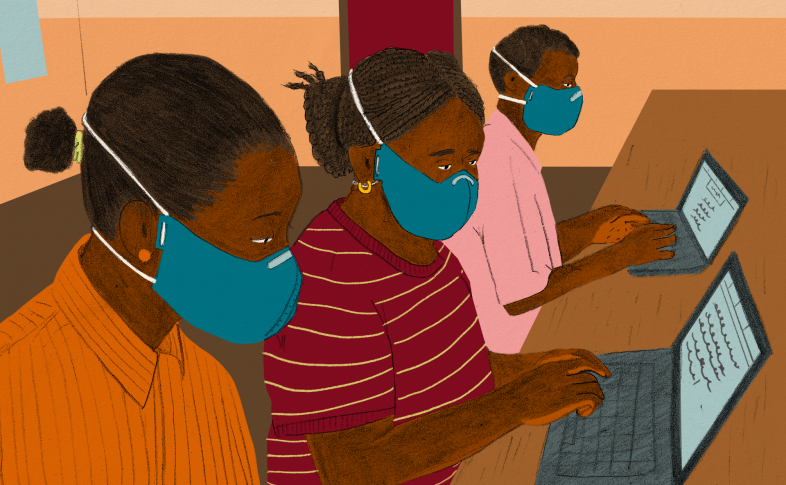
When certain government or market actions and services were unable to meet the pressing needs created by a pandemic and the lockdowns which, as a result, spiralled out of control, community networks demonstrated that they were more than techno solutions to communication. Every location of these community-rooted autonomous sites of communication and knowledge became its own powerhouse of resistance against the risks and inequalities that the pandemic has exacerbated.
In times when most governments scrambled and stumbled to take life-saving, effective and empathetic steps towards providing reliable and immediate health and education services while in a complete shutdown, communities stepped in to care for themselves and their neighbours. The spectrum of community networks activities covered a wide range of life-saving and dignifying actions and services through providing communication, health information, facilitating telemedicine applications, setting up education services, expanding internet access and reach, to preventing and tending to online and offline gender-based violence.
Community networks proved that infrastructure is only as robust as the more caring of its communal nodes.
In this second year of living in times of unequal global health crisis, we are glad to present this special edition of GenderIT.org: Infrastructures of resistance: Community networks hacking the global crisis and to share with our readers how intersectional approaches in community networks have been transforming these realities by embodying infrastructures of resistance and bringing hope to their communities.
You will find in this edition stories of hope, beauty, education and diverse community strategies that support people on the ground to overcome local challenges and keep humanity connected.
In this edition:
-
Infrastructures of resistance: Community networks hacking the global crisis. By Adriana Labardini.
The editorial article remarks that the involvement of women in community networks is essential to lead change for all: children, adults and the elderly, Indigenous, native and quilombola groups reinventing community life. (Also available in Japanese, courtesy of APC member JCA-NET) -
Sharing human and internet bandwidth of a community network in the middle of a pandemic. By Bruna Zanolli.
This article highlights the importance of building trust, empathy and feminist guidelines in the community so that their internet infrastructure could contribute to creating resilience and not only access to communications and information. -
Connectivity hacking the pandemic, enabling digital inclusion and unlocking treasure in rural areas. By Miami Chirilele.
The author writes about how Murambinda Works, a community network in North Buhera, Zimbabwe, has been able to connect 108,000 people and is hacking the crisis bottom-up. -
Community Networks: States, solutions and communities. By Upasana Bhattacharjee.
This piece reflects on community networks not only as a local connectivity infrastructure serving the unserved people and rural areas left out by markets or states, but mainly as a social actor that builds knowledge, autonomy and agency at the local level. -
Community networks as infrastructures of resistance: Re-centering the needs of women and communities in technology-making and connectivity. By Ingrid Brudvig and Sarbani Banerjee Belur.
This article provides a joint reflection about recentring the needs of women and communities in technology-making and connectivity, as infrastructures of resistance in times of crisis. (Also available in Japanese, courtesy of APC member JCA-NET) -
Broadband for the Rural North (B4RN) – podcast. By Kira Allman
This podcast will transport you to the rural north of the United Kingdom to invite you to witness one of the Broadband for the Rural North (B4RN) community network assembly meetings, where knowledge is shared, and empathy transpires. -
The Tower. By Marcela Guerra.
Through the tarot card “The Tower”, this piece raises awareness of the urgent need for a fresh start, for human-centred societies and infrastructures, or perish as Mother Nature agonises and inequalities are exacerbated. (Also available in Japanese, courtesy of APC member JCA-NET)
Read the full edition at GenderIT.org.